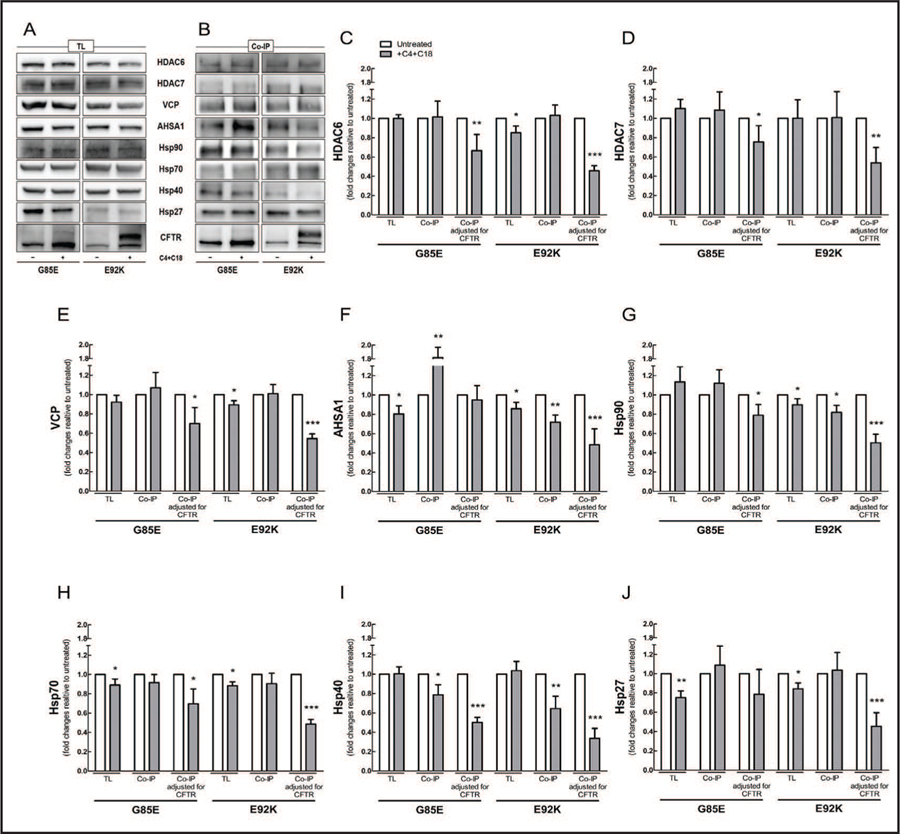Fig. 4.
Co-administration of C4 and C18 mitigates the binding of CFTR bearing G85E and E92K to proteostasis components. HEK-293 cell lines stably expressing CFTR constructs bearing G85E or E92K were treated with C4 and C18 (each 5 µM, 16 h). CFTR was immunoprecipitated with anti-CFTR antibody M3A7. Samples from (A) total protein lysate (TL) and (B) co-immunoprecipitation (co-IP) were subjected to immunoblotting, and membranes were incubated with different primary antibodies as detailed in Materials and Methods. (C-J) Quantification of blots from TL, co-IP, and co-IP adjusted for the total amount of CFTR, im-munoprecipitated with antibody against (C) HDAC6, (D) HDAC7, (E) VCP, (F) AHSA1, (G) Hsp90, (H) Hsp70, (I) Hsp40, or (J) Hsp27 (Student’s t-test, n = 4). Data are normalized to control (untreated sample) values; vs. control: *P < 0.05, **P < 0.01, ***P < 0.001. For this experiment, three to four gels were loaded with the same samples and then membranes were cut into two to three pieces to incubate each piece with a specific primary antibody. Each blot was reprobed for ezrin for the loading control.

